Photograpic Arts Student at the University of Westminster. E-Journal
Don't wanna be here? Send us removal request.
Text
Synopsis
A 21st Century Commodity
This project acts as a personal reflection on modern dating culture. As a person who has never really gotten along with the idea of swiping to find a potential husband I wanted to use this project as a way to explore these feelings further. Due to the fact that this a personal reflection I have only used profiles sources from my own Tinder account that I have matched with.
Exchange theory reflects on the choices people make when selecting a romantic partner- viewing relationships in terms of rewards and cost. Whereas equity theory suggests that individuals try to maximise their outcomes in a relationship whether that is just physically or emotionally. Naturally most people have a list or criteria of traits that they deem desirable in a potential partner. With the type of exposure that dating apps grant it is no surprise that the amount of available single people appears limitless. As a result the expectation or shopping list of traits acceptable to you begins to grow. Profiles can be understood as commodities that individuals are looking to buy into and invest time in.
The decline of aura in art happens when a once profound, unique object becomes a commodity of sorts. If a highly regarded painting such as Van Gogh’s Starry Night can be reproduced by the thousands it could be argued that the aura of the original painting begins to diminish. The increasing demand from the masses to be included in a culture and process they were once excluded from beings to break down through the reproducibility of art. As a result we are no longer bound to our own cognitive perception breaking down pre-existing social hierarchies within society, first established through elitist high culture and in this way photography revolutionises art.
In the same way that mass production is said to diminish the aura of high art/culture- mass exposure to a limitless pool of singles diminishes the aura associated with “finding the one”. The process becomes less about fate and more about how many times you swipe right.
0 notes
Text
Research Report
A 21st Century Commodity
This project acts as a personal reflection on modern dating culture. As a person who has never really gotten along with the idea of swiping to find a potential husband I wanted to use this project as a way to explore these feelings further. “Surfing is an individual experience and therefore any attempt to understand behaviour on the net must involve an examination of the personality of the surfer”. ( Yair Amichai, Hamburger, 2002) I strongly agree with Amichai’s position on the fact that every individual has a very different online experience. The Internet provides an opportunity to present yourself in the way you choose, meeting the world from your own territory provides a strong sense of security which can lead to feelings of confidence. The person you portray online is not necessarily the person you are ‘offline’. Many people might find it more difficult to interact face to face, therefore the internet provides a platform for these individuals to express themselves either anonymously or with limited aspects of their offline life revealed. On dating apps such as Tinder the minimum amount of information require by any user is your name, age, and photograph.
Computer mediated communication provides a higher level of control over discourse, hiding social cues and can potentially limit social presence. Anonymity leaves blank spaces in communications, allowing Computer mediated communication receivers to fill in blanks by attributing qualities to senders.
Exchange theory reflects on the choices people make when selecting a romantic partner- viewing relationships in terms of rewards and cost. Whereas equity theory suggests that individuals try to maximise their outcomes in a relationship whether that is just physically or emotionally. Naturally most people have a list or criteria of traits that they deem desirable in a potential partner. With the type of exposure that dating apps grant it is no surprise that the amount of available single people appears limitless. As a result the expectation or shopping list of traits acceptable to you begins to grow. Profiles can be understood as commodities that individuals are looking to buy into and invest time in.
The decline of aura in art happens when a once profound, unique object becomes a commodity of sorts. If a highly regarded painting such as Van Gogh’s Starry Night can be reproduced by the thousands it could be argued that the aura of the original painting begins to diminish. The increasing demand from the masses to be included in a culture and process they were once excluded from beings to break down through the reproducibility of art. As a result we are no longer bound to our own cognitive perception breaking down pre-existing social hierarchies within society, first established through elitist high culture and in this way photography revolutionises art.
In the same way that mass production diminishes the aura of high art/culture- mass exposure to a limitless pool of singles diminishes the aura associated with “finding the one”. The process becomes less about fate and more about how many times you swipe right.
The presentation of this project pays homage to relatively obvious pop art references. Warhol’s Campbell’s soup cans were driven by the fact that it was what Warhol claimed to be his daily habit of eating a bowl of Campbell’s soup and a sandwich for lunch spurred on by this he began to produce multiple, portrait style paintings of the products different flavours in early 1961. I have likened this to the soup cans in my project representing the habitual way people check their social media and dating accounts daily.
In addition to this I have also incorporated references to the Bianchini Gallery ‘Supermarket’ exhibition. Designed to juxtapose the viewing practises of looking at art against those against those linked to shopping for commercial goods. This is intended to reflect the importance of the product because it represents a person but also the insignificance of the individual/practise when placed in a commercial setting.
0 notes
Text
Label Designs


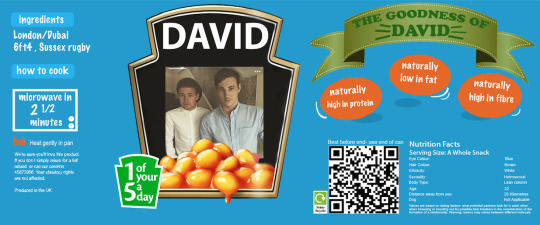
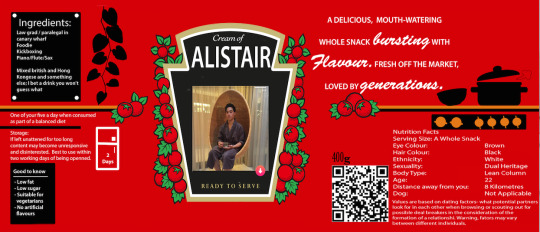
With these designs I moved away from the previous Tinder inspired layout and have opted for a more mass culture approach. The labels are designed to look like existing products linking back to classic pop art references whilst also challenging the idea of aura.
0 notes
Text
Label design in Photoshop
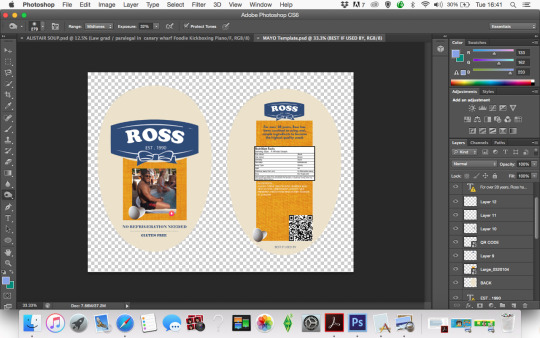
Here is a screen shot of one of the label templates demonstrating all the different editable layers of the designs.
0 notes
Text
The Future of Online Relationships:
The familiar person is emotionally closer than the stranger.
In cyberspace it would seem that there is no rest for anyone. The dynamic environment makes everyone restless. The restless nature of modern romantic life is further exacerbated by the wide spread participation of young people in cyber affairs and cyberspace.
0 notes
Text
Love Online: Emotions on the internet
The Seductive Space:
The Interactive Revolution in Imagination
We waste time looking for the perfect lover, instead of creating the perfect love - Tom Robbins
When asked why people engage with sexual relationships online the most common reason given was that they have specific fantasies and desires that are not being fourfold in their offline relationships.
Online relationships involve many imaginative aspects. Cyberspace is part of reality therefore incorrect to regard it as the direct opposite of real space. Cyberspace can be understood as a space where real people have actual intentions with other real people- while being able to create their own and other peoples personalities.
A man who often participates in cybersex writes:
“I love to cyber, I think it’s great. The only thing is I can’t cyber with someone I have never talked to before. Someone sent me a message and went right into cybering without asking my name or even if I wanted to. I would just like to have a regular conversation first. I guess some reality does play a part here, because I would not have sex in real life with someone whose name I did not know”
Notes:
Thoughts on Aura:
The decline of aura in art happens when a once profound,unique object becomes a commodity of sorts.
If a highly regarded painting such as Van Gogh’s Starry Night can be reproduced by the thousands it could be argued that the aura of the original painting begins to diminish. The increasing demand from the masses to be included in a culture and process they were once excluded from beings to break down through the reproducibility of art. As a result we are no longer bound to our own cognitive perception breaking down preexisting social hierarchies within society, first established through elitist high culture and in this way photography revolutionises art.
Historically Pop Art also worked to break down the notion of “high art” and “low art” by using typical, everyday objects and placing them in the context of high art, as a result opening up the medium to the masses. Andy Warhol is an obvious forefront to the Pop art movement. Warhol’s Campbell’s soup cans were driven by the fact that it was what Warhol claimed to be his daily habit of eating a bowl of Campbell’s soup and a sandwich for lunch spurred on by this he began to produce multiple, portrait style paintings of the products different flavours in early 1961. (The Regents of The University of California and Athens, E. 2009) In essentially making reproductions of the Campbell Soup advertisement Warhol changes the context in which mass culture is viewed.
0 notes
Text
Concept
Basic Concept:
An Installation staging of a super market however, all the products have tinder profile information as labels.
Mock up Labels:
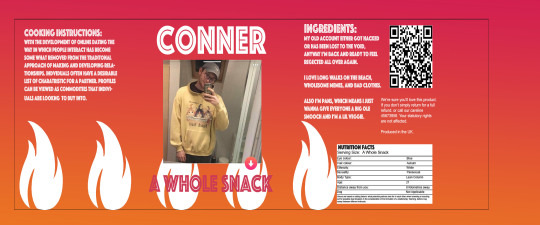
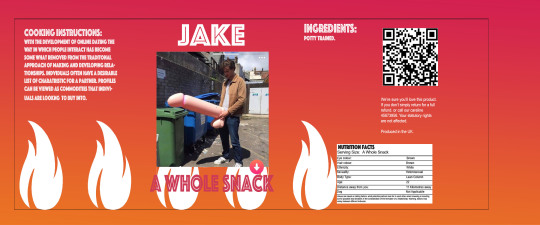
The Background detail bares homage to the Tinder logo in colours and graphics. The cooking instructions is a brief conceptual explanation of my project and the ingredients, the subjects tinder bio. The variables on the label are the image, name, nutritional information, and Ingredients.
The slogan “A Whole Snack” is a slag term for an attractive person.
When the QR code is scanned it comes up with a message reading “Congratulations! It’s a Match”
0 notes
Text
Example Profiles
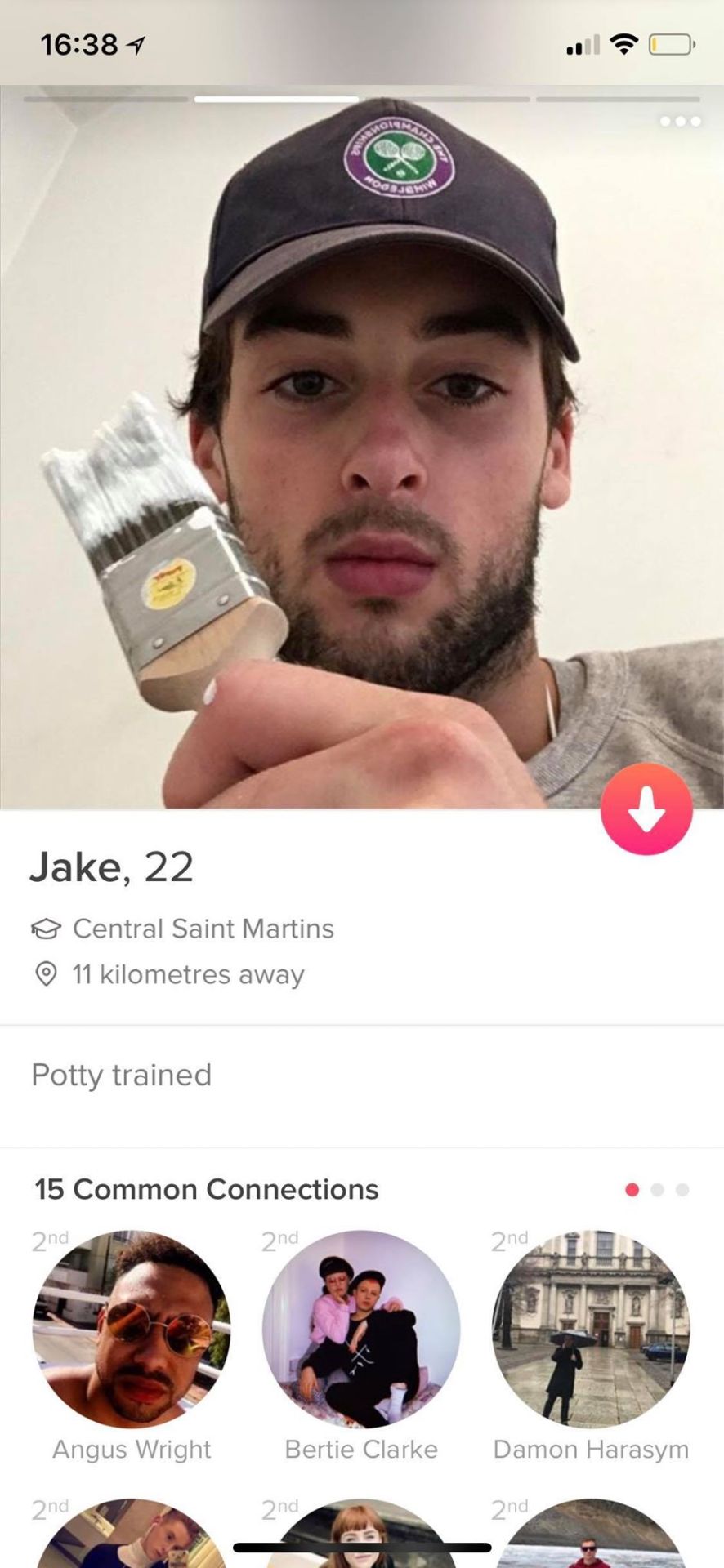
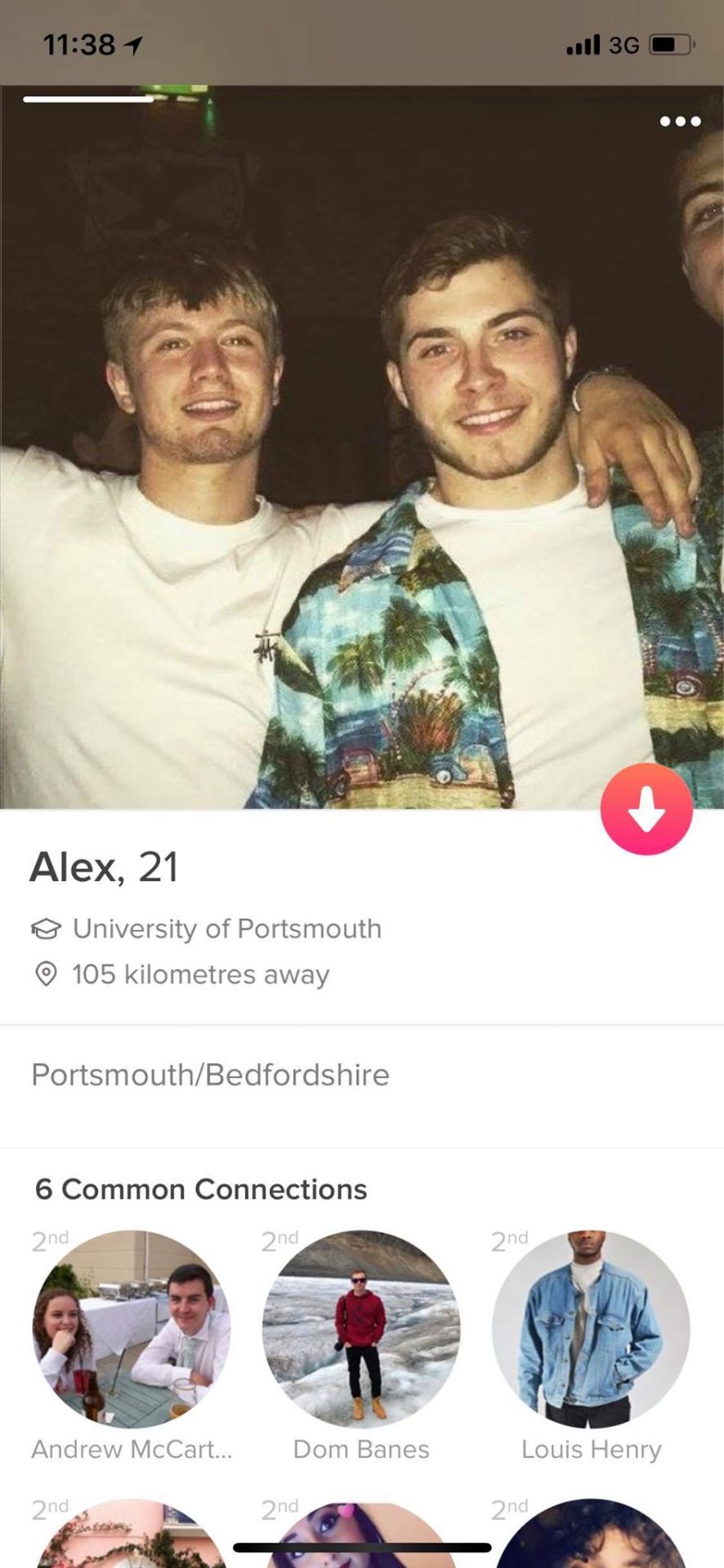
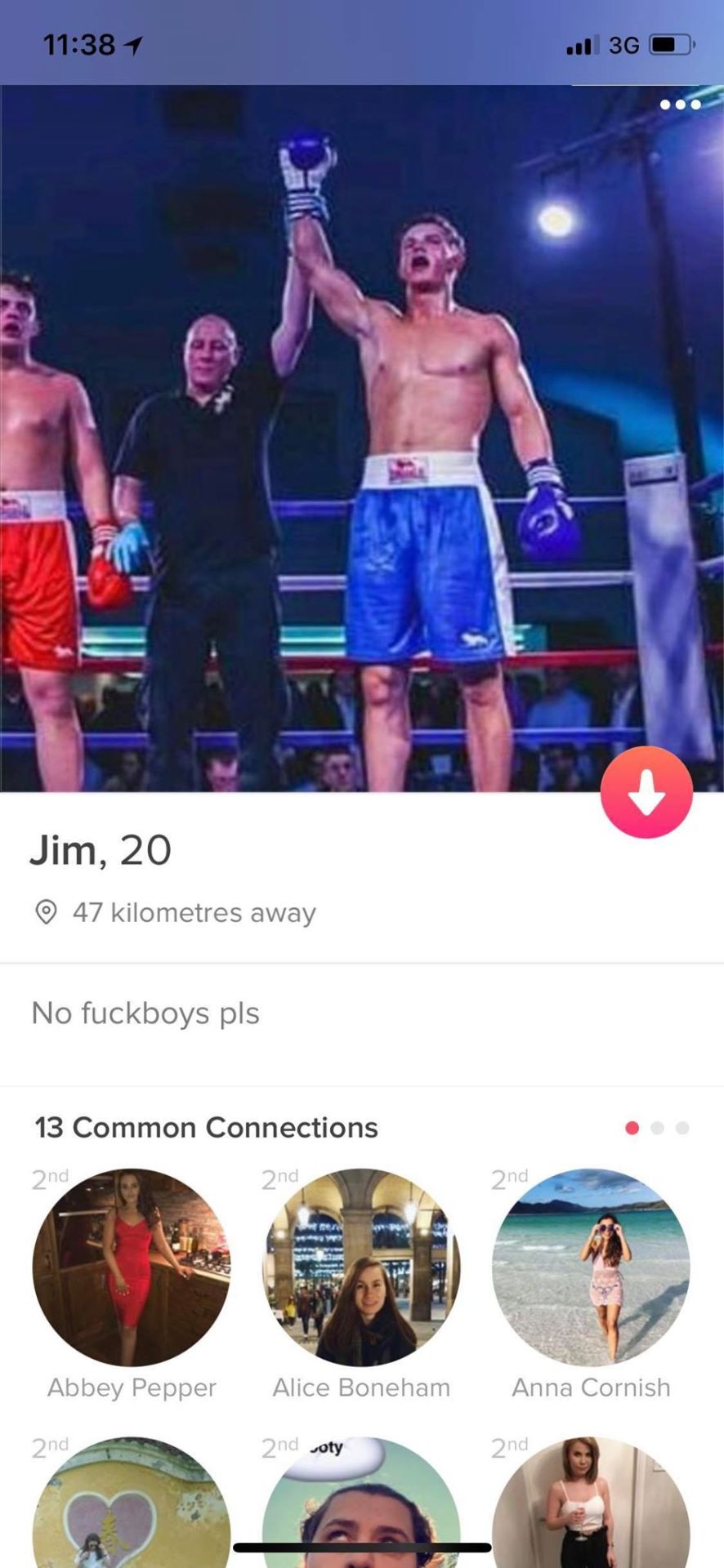
Here are a few examples of tinder profiles. I’m posting these to document the exact information shown on the profiles.
Key features:
Photographs or selfies
Name
Age
Bio
Distance away from me
Common connections
0 notes
Text
Tinder Terms and Conditions
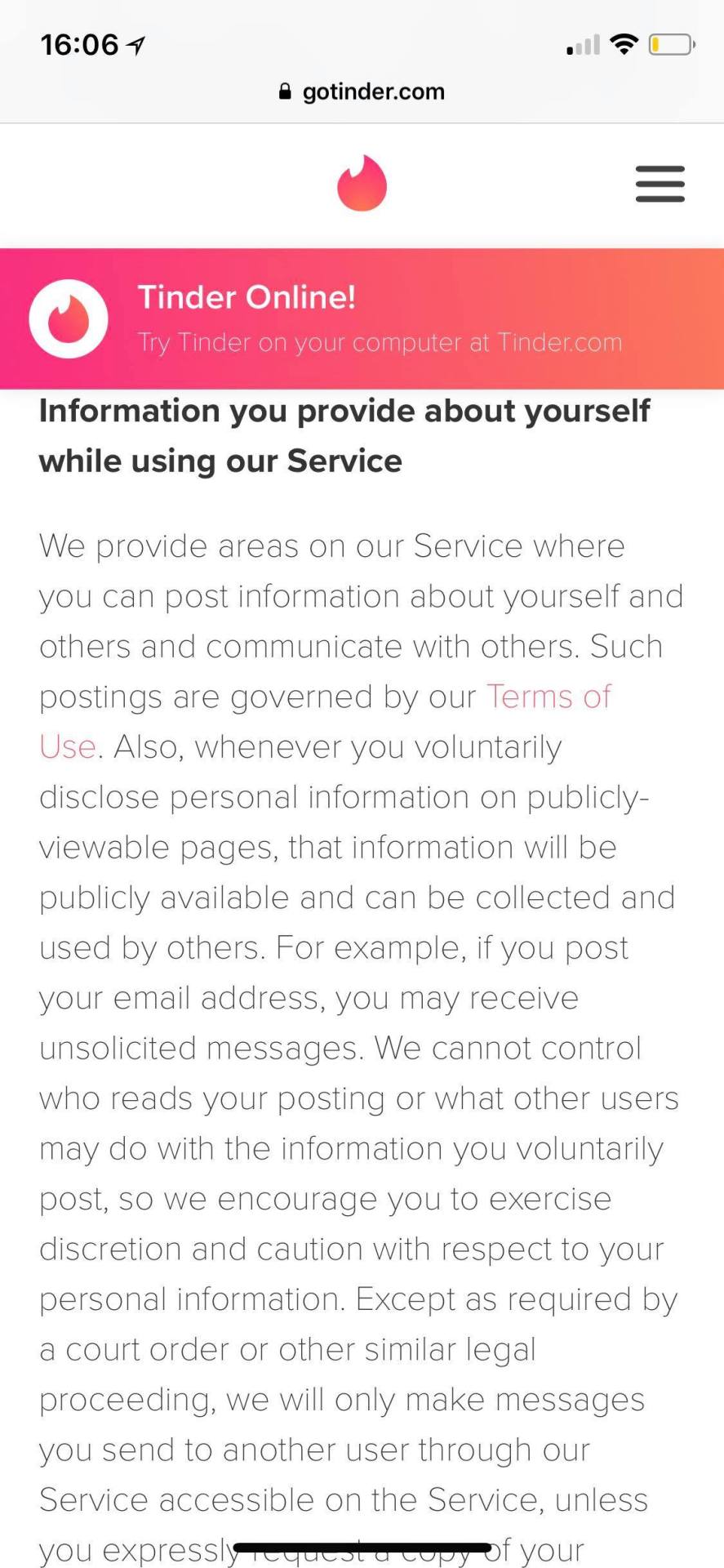
In Tinders terms and conditions it explicitly states that personal information on publicly reviewable pages can be collected and used by others. Therefore I can collect profile information without asking however, I would prefer to send a curtesy message in case some people really don’t want to get involved.
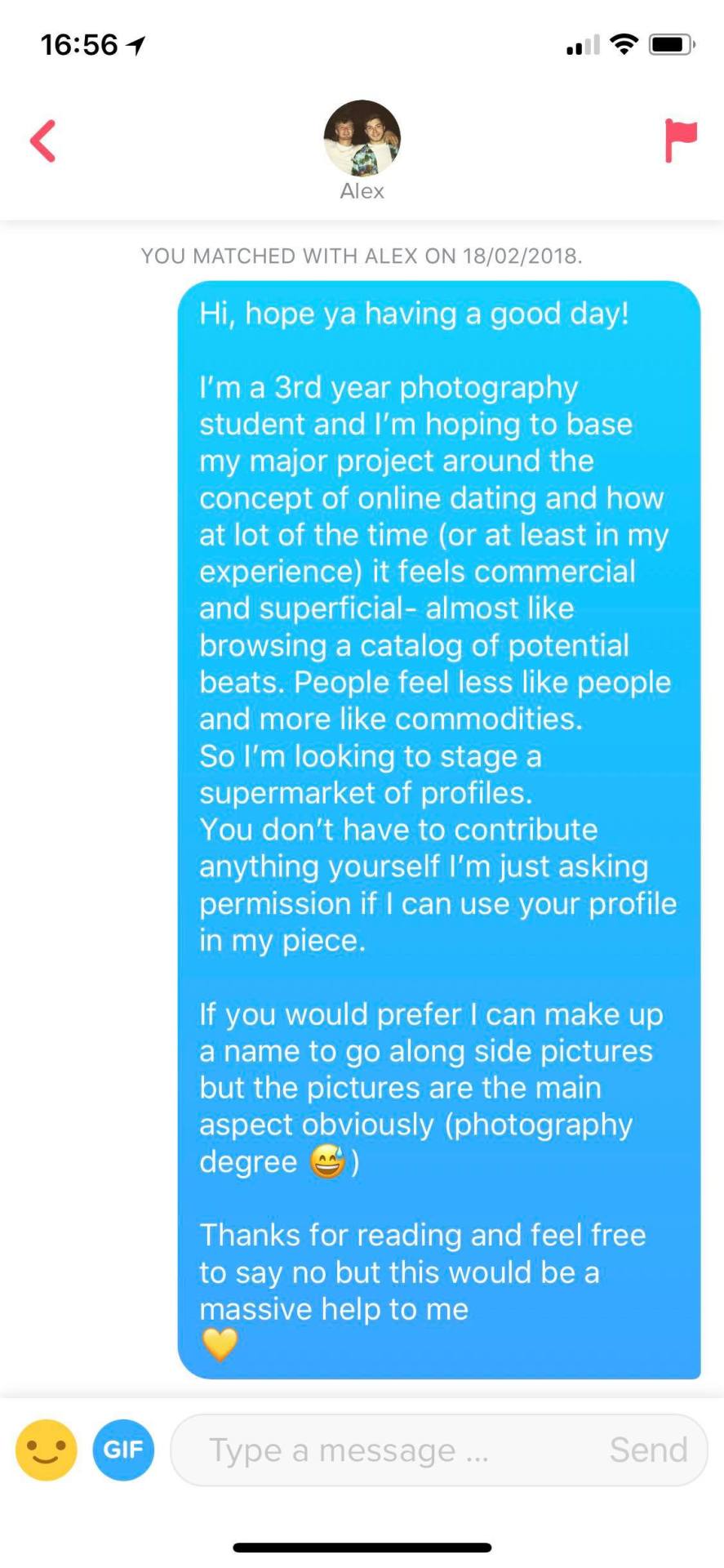
0 notes
Text
The Social Net: Online Romantic Relationships
Key theoretical areas that need to be considered with regards to online romantic relationships: Social Evolutionary Theory Social Penetration Theory Exchange Theory Equity Theory
Social Evolutionary Theory Through natural selection humans have inherited certain traits and emotional reactions. As a species we have evolved to value certain traits in the opposite sex. People whom posses these evolutionary characteristics can be deemed more attractive to others. Theory with regards to online relationships: Personal Advertisement: In this idea it is predicted that men online, are more likely to portray wealth whereas women are more likely to place emphasis on physical attributes. With this in mind its is also speculated that women are also more likely to lie about their looks. And men are also more likely to exaggerate or lie about their social status and/or wealth.
Social Penetrative Theory: Relationships move from less intimate to more intimate over time. (Attman and Tyler, 1973) Social penetrative theory discusses the depth and breadth of relationship formation. Gradually one feels safer to admit to other aspects of themselves (onion analogy) Theory with regards to online relationships: Individuals online are more likely to disclose depth and breadth aspects of themselves more quickly online compared to face to face interactions. Online dating profiles: Individuals are encouraged to provide surface level aspects of themselves e.g. Appearance, drinking and smoking habits, hobbies and interests. Online dating is even more removed from what people are used to when developing relationships.
Exchange Theory: Reflecting the choices people make when selecting a romantic partner. Viewing relationships in terms of rewards and costs- How satisfied an individual is with a relationship. Equity Theory: Individuals try to maximise their outcomes in a relationship. Theories with regards to online relationships: Characteristics are looked for in other as an exhaustive shopping list Profiles can be understudies commodities that individuals are looking to buy and invest time in.
0 notes
Text
The Social Net: Fake Profiles
Notes:
Fake Profiles
Control of physical Appearances: Users are able to hide their appearance at will- liberating part of the internet experience.
The Halo Effect- When Attractive people are assumed to have better traits.
Physical appearance is closely linked to impression management, for example, many people who are over weight might choose to display pictures where they look thinner.
The Internet provides an opportunity to present yourself on the way you choose, meeting the world from your own territory provides a strong sense of security which can lead to feelings of confidence.
0 notes
Text
The Social Net: Anonymity Online
Computer mediated - Communication provides a higher level of control over discourse’s, hiding social cues and can potentially limit social presence. Computed mediated communication is characterised by limited channel communications- mostly text (Riordant and Kreuz, 2010) Users can also decide how much self identifying information is disclosed, therefore readers interpretations become more important. Anonymity leaves blank spaces in communications, allowing Computer mediated communication receivers to fill in blanks by attributing qualities to senders (Jians, Bazarona, and Hancock, 2011)
This attribution has been shown to increase the degree of intimacy experienced between participants.
0 notes
Text
The Social Net: Understanding Our Online Behaviour Internet and Personality
Research Notes:
Here I will explore three key principles
The internet as a tool to empower The experience of the individual online -What is it that an individual brings with them to the internet to create their own unique “surfing” experience 3. Personality - “Characteristics of a person that accounts for their consistent pattern of behaviour” (Pervin 1993,p.3)
IMPORTANT Surfing is an individual experience and therefore any attempt to understand behaviour on the net must involve an examination of the personality of the surfer. ( Yair Amichai, Hamburger, 2002)
How does personality promote a users empowerment through the internet?
Thoughts:
Many people might find it more difficult to interact face to face therefore the internet provides a platform for these individuals to express themselves either anonymously or with limited aspects of their offline life revealed. For example people with Asperger syndrome or other communicative issues can find empowerment and comfort in niche forums for a particular interest where they are accepted straight away. The internet links people together, where they may have never met face to face.
0 notes
Text
Good Guy Frank Ocean
It’s a good guy, he hooked it up Said if I was in NY I should look you up I, first time I done saw you You text nothing like you look. Here’s to the gay bar you took me to It’s when I realised you talk too much, more than I do I, It’s highlights when I was convinced That it isn’t much more it’s so not you I know you don’t need me right now And to you it’s just a late night out
This song really resonates with me and I feel is very relevant to the inspiration behind my major project. As Frank Ocean sings about a speculated blind or set up date not turning out the way he’d anticipated or would have liked, there is a deep emotion felt by Frank Ocean in a somewhat disappointed manner.
“You text nothing like you look” is a particularly stand out lyric to me, provoking thoughts of online dating experiences that have gone sour in the sense that their profile and overall online domeanour doesn’t match the reality you are met with.
I think this is a very relatable scenario now, especially with the advancement and success of online dating. Often people can pick and choose the information about themselves to make public and therefore leaving it up to their potential partners to fill in the gaps by themselves.
Finally the very last line of the song indicates a misunderstanding in the purpose of this meeting. “And to you it’s just a late night out” Often with dating apps such as Tinder and Grindr the sole purpose for meeting someone off is for a one time hook up or “late night out”. Frank Oceans emotion throughout this song and the entire Album suggests he’s looking for something more for filling from a companion and that this encounter is what he wanted.
https://www.youtube.com/watch?v=ZnnwfgqdEGM
0 notes
Text
Research Report
Major Project Title
I am thinking of something along the lines of “The Faultless Self” or “The Refined Self”. The current title is a working one, I wanted to incorporate the idea of an offline and online existence, highlighting the differences or similarities between these two entireties. I realise this title is quite cliché and typical to the subject matter and would like to expand it further into the use of personality traits and incorporating the idea of the brain-gene personality chain somehow.
Research Methods
nature. At first I swung the vast bulk of my research towards the way I should photograph my subjects, looking at photographers such as Nan Goldin, Dash Snow, particularly his Polaroid Wall piece and Emily Rose England, specifically her Polababe collection. All these photographers use an insider approach and almost rough and ready way of photographing their subjects. The images take an unprofessional feel technically, often out of focus or with an ill constructed composition, this is mostly true for England and Dash, less so for Goldin. Their images take a personal, insider methodology which I would really like to take and use when shooting so I can achieve the truest sense of my subject.
Beyond shooting methods there is an exchange value behind behaviour of sharing images online. Peter Osborne defines the use value of photography as being analogue practises, and the exchange value being the digital practises. Osborne also highlights the fact that the exchange value of the medium might be evoking anxieties around the loss of the ontological, defining characteristics of the medium, bringing the medium further and further away from an art form. The argument here is largely formed around the mass use and exchange of images on social media which is said to be degrading the medium. I want to use my project to breakdown this stigma around the mass exchange of images on social media as being a bad thing for the ontological use of the medium. I do not think social media hinders the ontological definition of the medium but expands the field with the use of the internet creating a broader idea as to how images can be used in terms of art.
There is an interesting dynamic to profiles on social media; one because the profiles themselves are a specifically designed space for each individual user. The users you follow, pages you like, and sites that you visit all determined what images and content you see and engage with. These likes and joined pages become part of ones online “genetic code”- linking to Richard Dawkins in the infamous Selfish Gene between genes and memes as replicators- your “meme-pool” is made up of memes belonging to the cultures and subcultures you identify and engage with. Social media accounts act as a hub for these meme-pools to grow and expand forming communities and norms around them becoming part of your online genetic code. This forms the idea that when viewing someone’s profile you’re actually looking at highly specific information which has been filtered and chosen specifically for public viewing.
This leads us to another interesting aspect of online profiles- what gets deemed suitable for social media and how this standard can vary on different platforms. For example images shared on Platforms such as Facebook and Instagram might have a more vigorous screen process than that of images that get posted on Snapchat due to its temporary nature.
Pilot Project
The driving influence for this project is social media as a personal space- how that space is used and what is deemed acceptable for this space. The project largely works with found images from participants that have agreed to give me full access to images they post on their various social media accounts. These images will then be juxtaposed next to images I have taken of the subject, not necessarily to a standard that would meet what they would post online. By doing this I want to create a well-rounded visual representation of the subject, giving the viewer a truthful consider the personality and environment of this individual- allowing them to piece together the different aspects of the featured person’s life.
From the shoot, I have done I’ve found that I need to be very comfortable with the subject of the images so they can behave natural. I also found that photographing belongings or room layouts can reveal a lot about a person- again not necessary information or images you could find on a person’s profile.
From my first subject I found that her online and offline presence matched, although pictured more in drag online her offline life is spent out of drag surrounded by objects and people associated with this culture. This profile breakdown the stigma that social media is not a tool in which people can hide behind. This individual fully embraces her true self online and offline which was a refreshing start to the project.
However, as the project progressed I don’t want all the profiles to be coherent in content in that everyone that I interview and use should have matching online and offline content. For this project, I think it would be more thought provoking to have a mixture of people who might use social media as a tool to voice an opinion that they might not feel they can have in their offline life. Even highly contrasting individuals might be interesting seeing how different types of users engage with social media.
Audience and Context
In terms of audience I want it to appeal to every demographic just as social media does in a way. Providing a place in which individuals can achieve a sense of belonging. I want to use this project to break down the stigma around social media encouraging an exchange value within the medium, harming the ontological definition. Also, the idea that social media can be used as a tool to hide behind and manipulate people with by only trying to portray the refined version of yourself.
Ideally, I would like to portray social media as a positive contributor to society.
Production and Presentation
As I’m largely working with found images, production is somewhat limited. Obviously, I’m trying to spend as much time as possible with the chosen subject to understand them to the best of my ability so I can portray the most truthful version of them. In the shoot that I did do I found that its useful to include the surrounding members and environments that the individual belongs to. By combining found images and shot ones I can produce a well-rounded representation of the chosen individual however I did worry this would get messy when considering presentation.
My initial idea for the presentation of this project was to create a tunnel, or room like structure, in which viewers can walk through and view the different media. Videos would be projected and on screens, with images and text sourced of the subject’s private accounts would be displayed around the walls and roof of the structure. However, I found this idea to be quite elaborate and potentially space consuming when considering the graduate exhibition so abandoned this idea.
The more likely approach is to present this project would be on devices, homing an app which will house a new profile for the chosen individuals, displaying images, text, and video neatly and coherently. It also provides a familiarity for viewers when normally engaging with profiles on hand held devices.
Visual References / Bibliography
DASH SNOW
Dash Snow’s polaroid wall had a huge conceptual influence on my project, providing the idea of filling in the blanks of someone’s existence regardless of the nature of their habits, just being brutally honest in the way I photograph
NAN GOLDIN
Obviously, Goldin is famous for developing a new snapshot way of photographing people, taking an informal, insider approach as she already had bonds with the people she was photographing so the subjects appear comfortable in her presence with a camera. I would like to have this sense of ease with my subject, really get to know them throughout my project so that I can portray their personality and life in the more truthful way.
EMILY ROSE ENGLAND
England is another LGBTQ photographer, heavily engaged with the London club scene. Her project Polababe- all shot on polaroid’s- has a haphazard almost clumsy approach to photographing people. Akin to Nan Goldin her images have a sense of belonging to the group she is photographing. She gives aid to the digital age for her to be able to photograph these types of images within these minority communities.
PETER OSBORNE
Peter Osborne uses Marxist exchange and use value to understand how the photographic medium is progressing within modern day society- how it’s used and who it’s used by. The reasons for taking photographs is changing- not making them any less legitimate but just changing the way in which we engage with the medium. Sharing images online has become akin to a capitalist exchange, exchanging images for attention and online recognition.
RICHARD DAWKINS
Richard Dawkins uses a clever analogy between genes and memes to understand how memes replicate and thrive within society. At the time of the creation of the word meme Dawkins developed a very board definition consisting of catchphrases, food, clothes, ideas, and ways of building arches. With the developing of the internet memes have been able to expand and become more concise in their content aimed at specific groups. It’s interesting when people express their belonging to these specific groups by using a coded language and mutual understanding to the other members of the group.
0 notes
Text
Major Project Proposal
Name: Elisha Rice
Project Title (or working title)
The Faultless Self. This is a working title, I feel it is quite obvious to the subject matter and would like to develop it further. As I intend to work with different ideas behind personality traits I may also want to incorporate this into the title as well.
Subject / Concept
The concept behind my project lays within the subject of social media and the profiles people create for themselves. How accounts are a personally designed space in which you almost advertise yourself to other users. Photographs and content, you upload to your profile has been scanned and approved for public viewing, constructing an idealised version of yourself for social media. I want to contrast these approved images and content next to candid, natural photographs of the subject doing mundane or average activities true to the subject’s self.
Aims
My aim is not to demonise the idealised concept of social media, but almost celebrate it in a way. People can almost live happier more fulfilled lives via the use of social media connecting with people of similar interests forming virtual communities in which they can communicate using an established language and set of norms. My aim is to create an overall, accurate visual representation of an individual just by looking at the activities they engage with daily and juxtaposing them next to the images they deem usable for sharing.
Context / Audience
The audience is for the masses, often middle aged individuals demonise social media for encouraging false representations and over use and I would like to help break down that stigma. In addition to that I would like to highlight the differences and similarities between individuals that use social media breaking down the ideal that everyone who uses social media to the representation of themselves online.
Proposed form, medium, presentation
initially I thought I wanted to present the profiles using prints however, to do that effectively I would like to present it as a tunnel or installation that viewers can walk through seeing the different images together, working out which ones are candid and which ones selected from the subject’s social media. I would also like to use video possibly sourced from the subjects snapchat or Instagram stories which are only designed to last 24 hours.
However, I think this approach is too overwhelming and large scale for the exhibition and need to downscale it. The only other approach I think that would suit this project is being presented in an app format that resembles a profile on a social media platform. This way the images, video, and text can be viewed coherently and make sense to the viewer.
0 notes
Text
Initial Presentation ideas
I feel like the best way to present this project would be through a device with an app housing all the achieved image, text and video. I think this because if I chose to do print I can see it getting messy, incoherent, and too large due to the sheer amount of content.
I also think featuring the images on a app with a social media profile like layout offers a sense of familiarity to the source of the images. A sort of homage to the inspiration of this project.
We often tend to get immersed into our devices and I would like to immerse people into the life of a certain individual, exposing every detail by creating a true profile.
There are many app building websites and programs available to help me with this so I don’t think this would be an unachievable direction to take my project.
0 notes